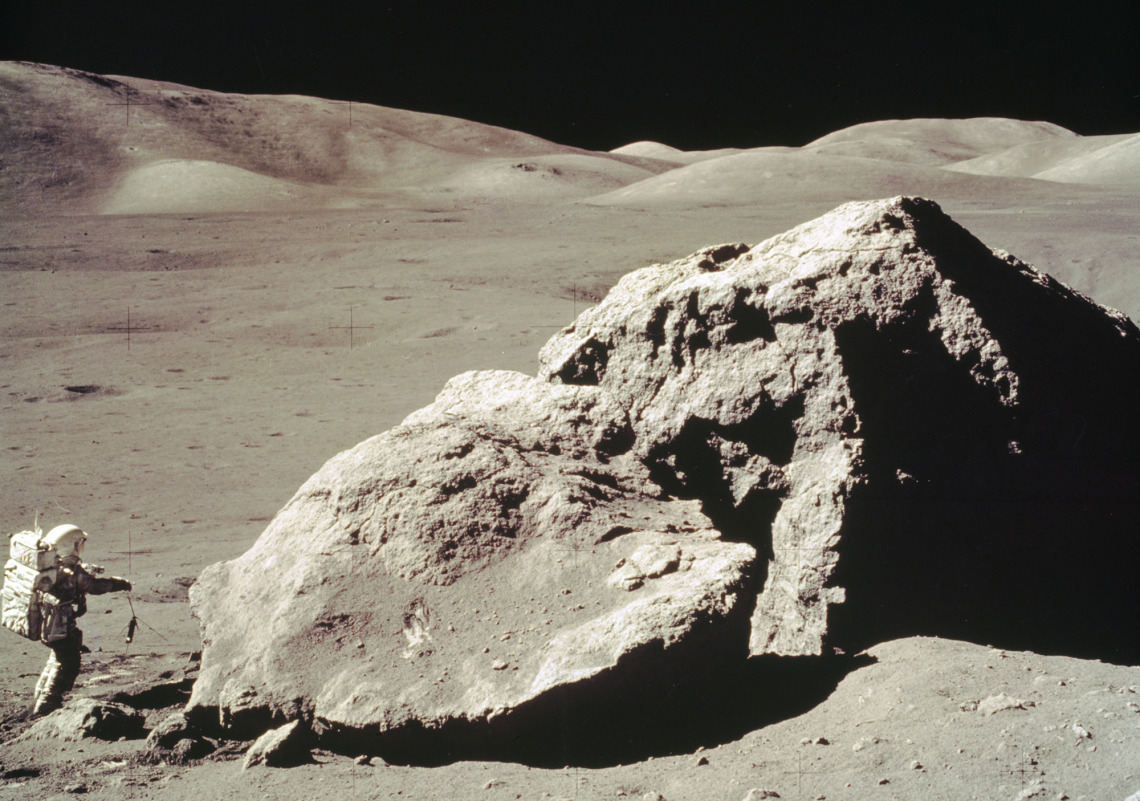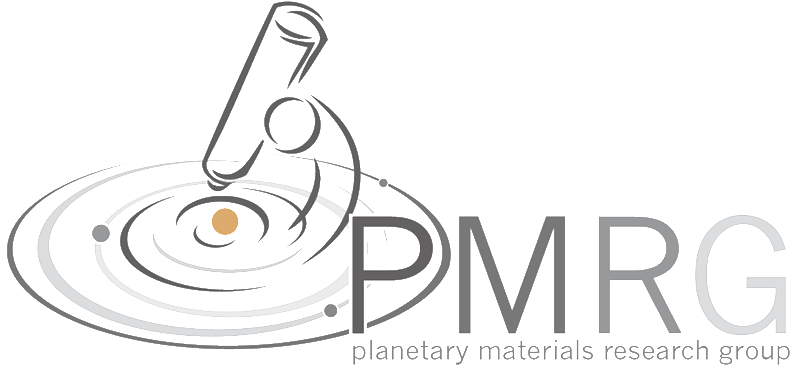UA Planetary Scientist Wins Bid to Study Moon Samples
Incoming assistant professor Jessica Barnes will have the opportunity to study a previously unopened sample of a moon rock that was collected in the early 1970s during NASA's Apollo 17 mission.

In this Apollo 17 onboard photo, scientist and astronaut Harrison H. Schmitt collects rock samples from a huge boulder near the Valley of Tourus-Littrow on the lunar surface. (Photo: NASA)
A research team led by Jessica Barnes, who will join the University of Arizona’s Lunar and Planetary Laboratory as an assistant professor this fall, has been selected by NASA to receive funding to study previously unopened lunar samples collected by moon-walking astronauts under the Apollo program.
Barnes and her team of researchers submitted a successful research proposal to NASA under its Apollo Next Generation Sample Analysis, of ANGSA, Program. The purpose of ANGSA is to maximize the science derived from samples collected on the moon in preparation for future lunar missions anticipated in the 2020s and beyond. To achieve this, ANGSA solicited research on specially curated materials from the Apollo 15, 16 and 17 sample collections, which were returned to Earth between 1971 and 1972.
Barnes and her team, which specializes in studying traces of water in moon rocks, will be granted access to Apollo 17 sample 71036, which contains almost four ounces of rock. Several samples from that mission were initially processed under nominal laboratory conditions, protected from air exposure by a nitrogen cabinet at room temperature, and were then placed into cold storage within one month of return.
Apollo 17, the final mission in which humans visited the moon, landed in the Taurus-Littrow Valley on the eastern edge of Mare Serenitatis on Dec. 11, 1972. The astronauts were tasked with collecting samples of ancient rocks from the lunar highlands and looking for evidence of young volcanic activity on the valley floor. They collected 741 individual rock and soil samples weighing almost 250 pounds, including a deep drill core with material from 10 feet below the moon's surface.
"The question we want to answer is, are we measuring the true moon signature? Or are there terrestrial influences that have affected the samples during their storage?'" Barnes said. "The beauty of a frozen sample is that it's been kept curated in a different way from the samples stored at room temperature. We could not do this research without opening the frozen samples."
Researchers will embed rock samples in a resin of mounting medium and slice them into microscopically thin sections, which will then be analyzed for their chemical makeup. The samples will remain available for scientists to study in the future.
Barnes and her team expect the project's results to inform the handling of the sample that the UA-led OSIRIS-REx mission is going to collect at asteroid Bennu in 2020.
Barnes is the principal investigator of a science team that includes the following co-investigators: Tom Zega, also at the Lunar and Planetary Laboratory, Jeremy Boyce and Scott Messenger at NASA's Johnson Space Center, Jed Mosenfelder of the University of Minnesota, Carolyn Crow of the University of Colorado Boulder, and Maryjo Brounce of the University of California Riverside.


